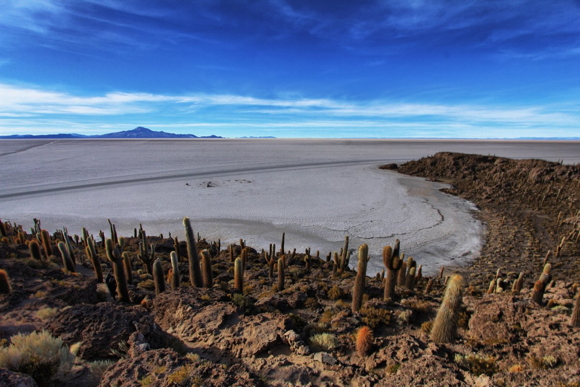
(above) To get to the salt flat, known as the Salar de Uyuni, Ranjan had to travel via a 20-seat propeller plane from La Paz, the capital of Bolivia. He went in June, which is wintertime in the Southern Hemisphere. Credit: Bharat Ranjan
12 Pictures That Will Make You Want To See Bolivia's Breathtaking Salt Flats
September 3, 2014 - BusinessInsider.com
A few years ago, while flipping through an in-flight magazine on an airplane, photographer and world traveler Bharat Ranjan read a tiny blurb about Uyuni, a small city in southwest Bolivia, which is home to magnificent salt flat. Ranjan immediately wanted to go.
A salt flat, or salt pan, is a large, smooth area of land, usually found in a desert, that is covered in salt or other minerals. They shine white when the sun hits them, making for a very beautiful and striking sight. The Salt Flats at Uyuni, or Salar de Uyuni, are 4,086 square miles, almost 100 times the size of the Bonneville Salt Flats in Utah, making them the largest salt flats in the world.
While on a trip to Machu Picchu in Peru, Ranjan remembered Uyuni and decided to plan a trip to Bolivia, which borders Peru, to see the place in person. What he saw was more amazing that he could have even hoped.
He stayed at the Luna Salada Hotel on the edge of the salt flat. Almost everything in the hotel is made from salt bricks. You can see more of the hotel here.
(below) 2 Bharat Ranjan
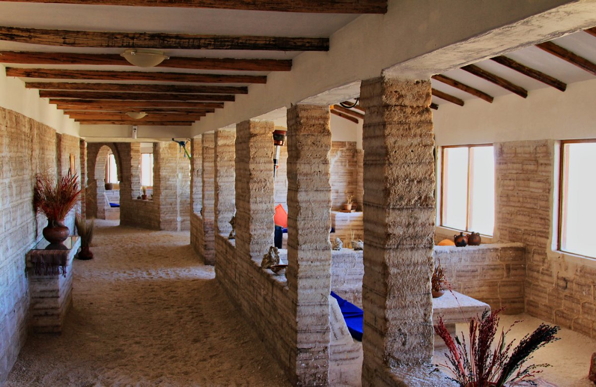
During the day, Ranjan explored the salt flats. The landscape is very desolate with no distinguishing features besides the massive expanse of white. Due to freezing and thawing of the crystalline salt, the ground forms crusted hexagonal plates in large areas.
(below) 3 Bharat Ranjan

Every once in a while, the white is broken by pools of water fed by underground springs.
(below) 4 Bharat Ranjan
The area is not totally lacking in plants and animals. Believe it or not, Pink Flamingos live in the Salar, as do several other types of birds, foxes, and Viscachas, which are similar to rabbits.
(below) 5 Bharat Ranjan
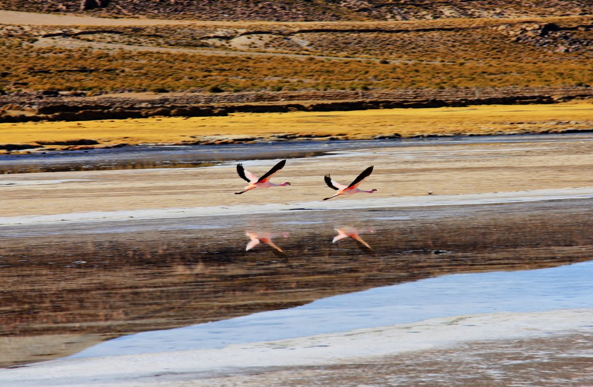
And, of course, the sunsets are unbelievably beautiful.
(below) 6 Bharat Ranjan

The pyramids of salt you see are piled there by the salt miners who harvest the area for its minerals. They collect sodium, potassium, magnesium, borax, and lithium, which is the most lucrative.
(below) 7 Bharat Ranjan

Because the Bolivian government does not want exploitation of the Salar, no mining facilities exist on the flat, which allows them to stay beautiful and undepleted.
(below) 8 Bharat Ranjan
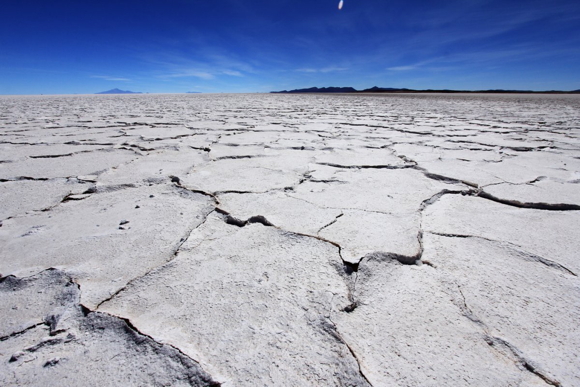
Conservation was not always the norm, though. In the 1800s, train tracks were built, and Uyuni was a hub for transportation. But the trains were never successful, due in part to the uproar the tracks created with the indigenous communities in the area. Today, only one train track is still in function.
(below) 9 Bharat Ranjan
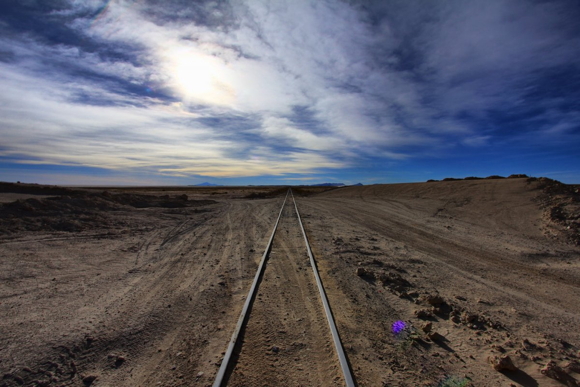
Tourists can, however, visit the train graveyard, which features antique engines and train cars from days past.
(below) 10 Bharat Ranjan

Uyuni, the city near the Salar which shares the same name, is described by Ranjan as being similar to a "shanty town" where most buildings outside of the center don't have electricity. The busiest spot in town is definitely the gas station, Ranjan says.
(below) 11 Bharat Ranjan

Many miners come to town after a long day of work to visit the local bars. In his time in the city, Ranjan says he had impossible time finding hot sauce, of all things. The salt flats of Uyuni truly are one of the most beautiful and serene places on Earth. A bucket list destination for sure.
(below) 12 Bharat Ranjan
